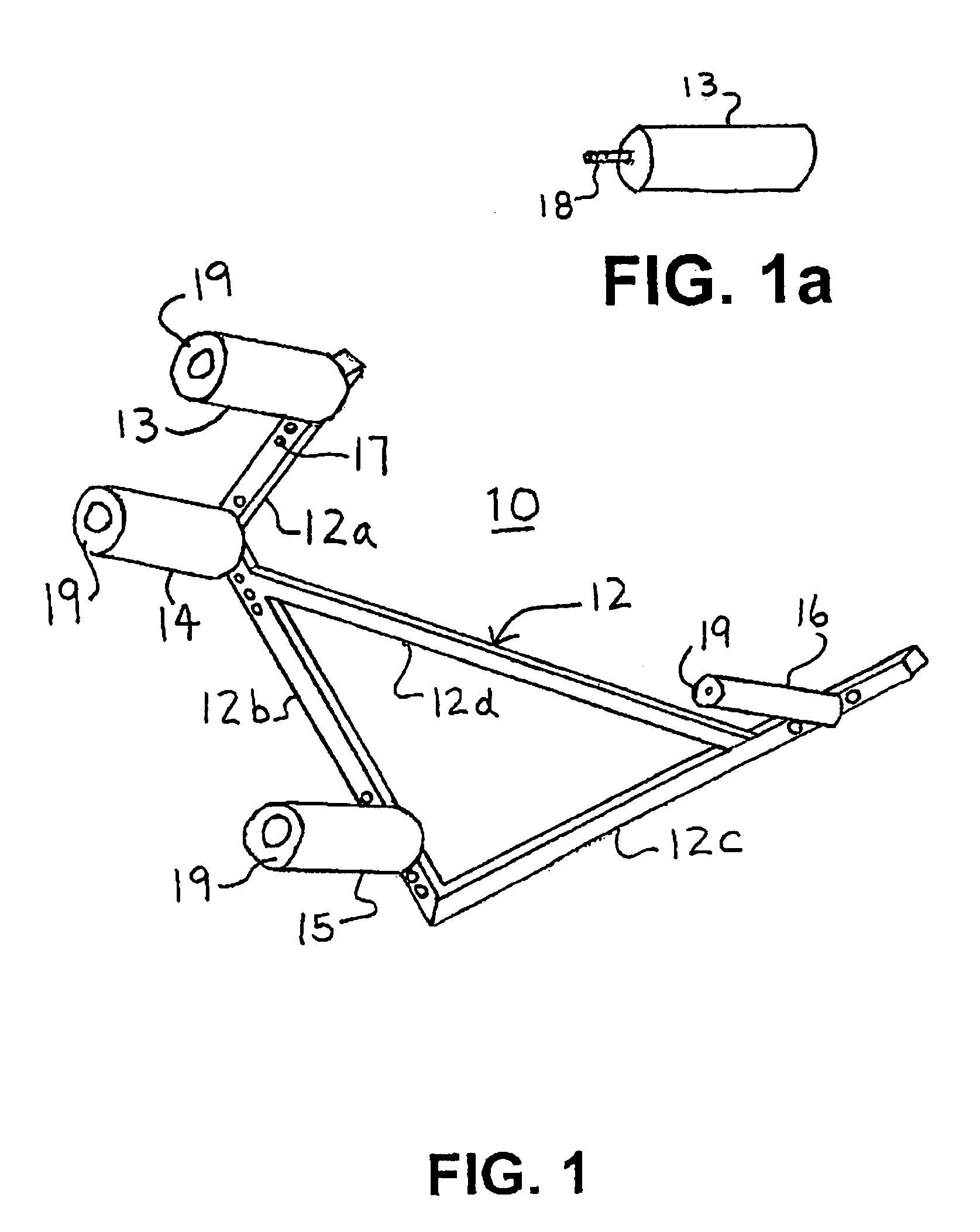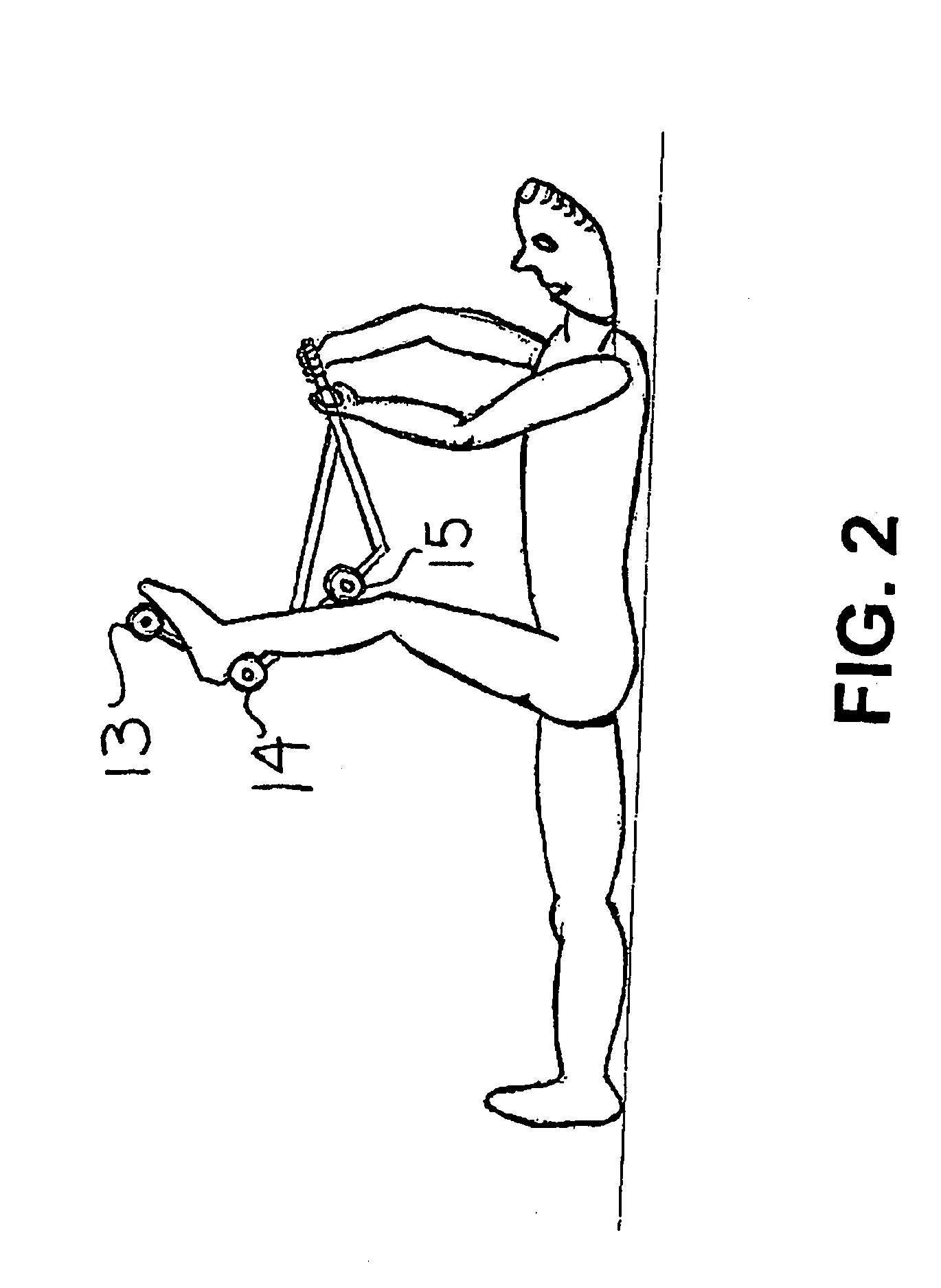Apparatus for stretching hamstrings
a technology for hamstrings and exercises, applied in the field of exercise equipment, can solve the problems of increasing the risk of injury to these muscles, affecting the quality of daily life, and atrophy of the muscle, and achieve the effect of reducing the complexity of the current stretching apparatus and simple construction
- Summary
- Abstract
- Description
- Claims
- Application Information
AI Technical Summary
Benefits of technology
Problems solved by technology
Method used
Image
Examples
Embodiment Construction
[0094]Referring now particularly to the drawings, FIG. 1 represents a perspective side view of the hamstring stretching apparatus 10, which is an exemplary embodiment of the invention. Apparatus 10, as illustrated, demonstrates how the above mentioned disadvantages have been overcome.
[0095]FIG. 1 illustrates an apparatus for stretching hamstring muscles in a prone position, comprising:[0096]a) means for holding 16;[0097]b) means for supporting a foot 13 and 14, and[0098]c) means for keeping a knee joint from bending 15,
wherein the means for holding, the means for supporting a foot, and the means for keeping a knee joint from bending are functionally connected to form one-piece frame 12.
[0099]More specifically, apparatus 10, as exemplified, may be made of unitary frame 12. Frame 12 may be described as being divided into four segments 12a-12d that are joined together to form one piece. Segments 12a-12c function, in part, as attachment areas for the attachment of means for holding 16, ...
PUM
 Login to View More
Login to View More Abstract
Description
Claims
Application Information
 Login to View More
Login to View More - R&D
- Intellectual Property
- Life Sciences
- Materials
- Tech Scout
- Unparalleled Data Quality
- Higher Quality Content
- 60% Fewer Hallucinations
Browse by: Latest US Patents, China's latest patents, Technical Efficacy Thesaurus, Application Domain, Technology Topic, Popular Technical Reports.
© 2025 PatSnap. All rights reserved.Legal|Privacy policy|Modern Slavery Act Transparency Statement|Sitemap|About US| Contact US: help@patsnap.com



